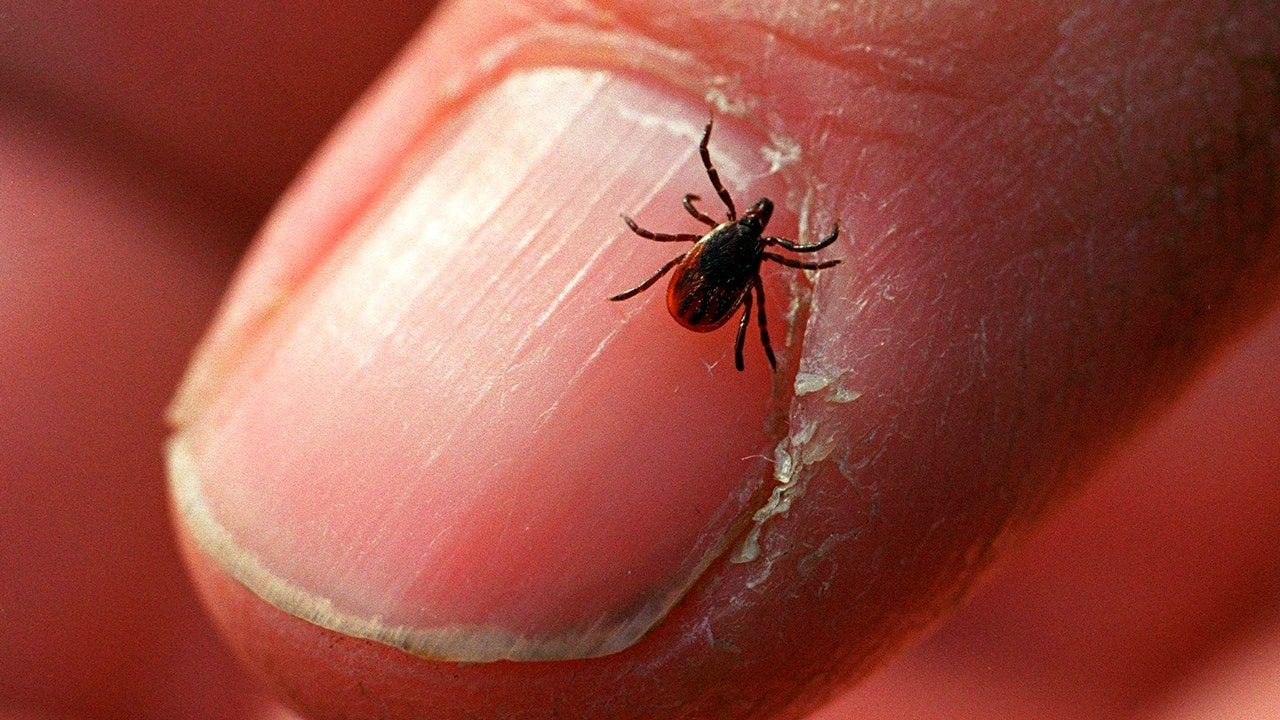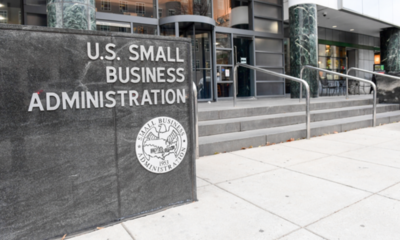Health
Hundreds of Thousands Have Lost Medicaid Coverage Since Pandemic Protections Expired

Hundreds of thousands of low-income Americans have lost Medicaid coverage in recent weeks as part of a sprawling unwinding of a pandemic-era policy that prohibited states from removing people from the program.
Early data shows that many people lost coverage for procedural reasons, such as when Medicaid recipients did not return paperwork to verify their eligibility or could not be located. The large number of terminations on procedural grounds suggests that many people may be losing their coverage even though they are still qualified for it. Many of those who have been dropped have been children.
From the outset of the pandemic until this spring, states were barred from kicking people off Medicaid under a provision in a coronavirus relief package passed by Congress in 2020. The guarantee of continuous coverage spared people from regular eligibility checks during the public health crisis and caused enrollment in Medicaid to soar to record levels.
But the policy expired at the end of March, setting in motion a vast bureaucratic undertaking across the country to verify who remains eligible for coverage. In recent weeks, states have begun releasing data on who has lost coverage and why, offering a first glimpse of the punishing toll that the so-called unwinding is taking on some of the poorest and most vulnerable Americans.
So far, at least 19 states have started to remove people from the rolls. A precise total of how many people have lost coverage is not yet known.
In Arkansas, more than 1.1 million people — over a third of the state’s residents — were on Medicaid at the end of March. In April, the first month that states could begin removing people from the program, about 73,000 people lost coverage, including about 27,000 children 17 and under.
Among those who were dropped was Melissa Buford, a diabetic with high blood pressure who makes about $35,000 a year at a health clinic in eastern Arkansas helping families find affordable health insurance. Her two adult sons also lost their coverage.
Like more than 5,000 others in the state, Ms. Buford, 51, was no longer eligible for Medicaid because her income had gone up. A notice she received informing her that she did not qualify made her so upset that she threw it in a trash can.
But a majority of those who lost coverage in Arkansas were dropped for procedural reasons.
Daniel Tsai, a senior official at the Centers for Medicare and Medicaid Services who is helping to oversee the unwinding process for the Biden administration, said that more outreach was needed to help those who lost coverage that way. He said federal officials were in regular contact with state officials around the country to review early data on the unwinding and check whether people who lost coverage had a fair shot to prove their eligibility.
Gov. Sarah Huckabee Sanders of Arkansas, a Republican, has framed the unwinding as a necessary process that will save money and allow Medicaid to function within its intended scope.
“We’re simply removing ineligible participants from the program to reserve resources for those who need them and follow the law,” Ms. Sanders wrote in an opinion essay in The Wall Street Journal this month. She added that “some Democrats and activist reporters oppose Arkansas’s actions because they want to keep people dependent on the government.”
Medicaid, which is financed jointly by the federal government and the states, has become an increasingly far-reaching component of the American safety net. Early this year, 93 million people — more than one in four Americans — were enrolled in Medicaid or the Children’s Health Insurance Program, up from 71 million before the pandemic.
What has played out in Arkansas so far offers evidence of the widespread disruption that the unwinding process is likely to cause in households across the country in the coming months, forcing Americans to find new insurance or figure out how to regain Medicaid coverage that they lost for procedural reasons. The federal government has projected that about 15 million people will lose coverage, including nearly seven million people who are expected to be dropped despite still being eligible.
Among the biggest looming questions is how the process will affect children. In Florida, for instance, a boy in remission from leukemia and in need of a biopsy recently lost his coverage.
Researchers at the Georgetown University Center for Children and Families estimated before the unwinding that more than half of children in the United States were covered by Medicaid or CHIP. Many children who lose coverage will be dropped for procedural reasons even though they are still eligible, said Joan Alker, the center’s executive director.
“Those kids have nowhere else to turn for coverage,” she said. “Medicaid is the single largest insurer for children. This is hugely consequential for them.”
In Arkansas, many of the children who lost Medicaid were “the poorest of the poor,” said Loretta Alexander, the health policy director for Arkansas Advocates for Children and Families. She added that losing coverage would be especially harmful for young children who need regular developmental checkups early in life.
Most states are taking around a year to complete the unwinding, with each one using its own approach to removing people from Medicaid. But in Arkansas, legislation passed in 2021 required state officials to complete the process in just six months. State officials checked the eligibility of children with Medicaid coverage early in the process because they make up a substantial share of those who are enrolled, according to Gavin Lesnick, a spokesman for the state’s Department of Human Services.
In her opinion essay, Ms. Sanders pointed to the campaign that the state has waged to alert residents to the unwinding, called Renew Arkansas.
“We hired extra staff and enlisted volunteers to help,” she wrote. “We texted, emailed and called tens of thousands of Arkansans who likely are now ineligible for Medicaid, and we have made a special effort to reach out to those with disabilities, those who have moved, those with afflictions like cancer, those receiving dialysis and women who are pregnant.”
Local health workers like Ms. Buford are trying to help people regain coverage if they still qualify for it. She said that she had worked with 50 to 75 Medicaid recipients who had lost coverage in April, helping them fill out forms or answering their questions about how to verify their eligibility.
Other states have also removed a large number of Medicaid recipients for procedural reasons. In Indiana, nearly 90 percent of the roughly 53,000 people who lost Medicaid in the first month of the state’s unwinding were booted on those grounds. In Florida, where nearly 250,000 people lost Medicaid coverage, procedural reasons were to blame for a vast majority.
In addition to taking different approaches to removing people from Medicaid, states are also releasing data about their progress in different ways, making it difficult to compare their strategies in the early stages of the unwinding. “We’re comparing apples to oranges to tangerines,” Ms. Alker said.
Some people who lose Medicaid coverage are expected to get health insurance through their employer. Others are likely to turn to the Affordable Care Act’s marketplaces to sign up for private insurance, and many of them will be eligible for plans with no premiums.
Debra Miller, 54, of Bullhead City, Ariz., lost Medicaid coverage in April after her roughly $25,000 annual salary as a Burger King cook left her ineligible. Ms. Miller, a single mother with diabetes and hypothyroidism, worked with an insurance counselor at North Country HealthCare, a network of federally funded health clinics, to enroll in a marketplace plan with a roughly $70 monthly premium.
“It’s a struggle because it’s a new bill that I haven’t had before,” she said. Her new plan, she added, does not include vision insurance, leaving her worried about paying for eye appointments she needs as a diabetic.
Ms. Buford said that for some people in Arkansas, marketplace coverage would be too expensive.
“You have a car, mortgage, kids, food,” she said. “You really don’t have that much left to pay that much for health insurance.”
Ms. Buford said that her job helping others find health insurance in underserved areas was a calling inspired by watching her grandmother struggle to afford her medications and rely on food pantries. Ms. Buford went to a community college near her hometown so she could take care of her sick father, who passed away in his 40s. “I love my job because I’m able to help people,” she said.
Now that she has lost her Medicaid coverage, Ms. Buford said she hoped to find an affordable marketplace plan in the near future. The family plan offered by the clinic where she works is too costly, she said.
“I’m grateful for what I have because someone else doesn’t have what I have,” Ms. Buford said. “I just wish I could have kept my Medicaid.”

Health
fatty15 has the essential nutrient to ease stress and well-being

Sign Up
Create a free account to access exclusive content, play games, solve puzzles, test your pop-culture knowledge and receive special offers.
Already have an account? Login
Forgot your password?
Get back to the Sign In
Use left and right arrow keys to navigate between menu items.
Use escape to exit the menu.
Health
Summer is tick season, but these tips can help you avoid the bloodsucking bugs

Tick season is starting across the U.S., and experts are warning the bloodsuckers may be as plentiful as ever.
Another mild winter and other favorable factors likely means the 2024 tick population will be equal to last year or larger, some researchers say.
“It’s very bad and has only been getting worse,” said Susanna Visser of the Centers for Disease Control and Prevention.
TICK BITES AND LYME DISEASE: WHAT TO DO IF A TICK BITES YOU OR YOUR PET
An increasing variety of ticks are pushing into new geographical areas, bringing unusual diseases. Exotic southern species like the Gulf Coast tick and the lone star tick are being detected in New York and other northern states, for example.
But the tick that experts warn of the most is a common blacklegged tick, which is found mainly in forests and spreads Lyme disease. Infection rates begin to peak in May, and U.S. health officials estimate nearly half a million Lyme disease infections happen annually.
Here’s a look at what’s expected this year and how you can protect yourself.
An adult deer tick, also known as the blacklegged tick, crawls on a fingernail at Connetquot State Park in Oakdale, New York on Dec. 27, 2011. (Bill Davis/Newsday RM via Getty Images)
TICK FACTS
Ticks are small, eight-legged bloodsucking parasites — arachnids, not insects — that feed on animals and sometimes people. Some ticks are infected with germs that can cause illness, and they spread those germs when they bite.
There is no widely accepted estimate of how many ticks there are from one year to the next, but there is a scientific consensus that they are an increasingly common health hazard in large portions of the United States.
Blacklegged ticks — also known as deer ticks, since they feed on deer — are among the most common ticks in the eastern half of the U.S. They were plentiful centuries ago, then diminished when forests were cut down and deer were hunted, and rebounded alongside deer and wooded suburbs. The ticks have spread out from pockets in New England and the Midwest over a wider range.
Tick populations cycle throughout the year and their numbers depend on a few factors. They like warm, humid weather, and more can be seen after a mild winter. The more deer and mice available to feed matters, too.
Overall, the blacklegged tick population has been expanding for at least four decades, researchers say.
“This is an epidemic in slow motion,” said Rebecca Eisen, a CDC research biologist and tick expert.
2024 TICK SEASON FORECAST
Weather can play a role in the severity of a tick season.
Very cold, dry winters can whittle down tick populations, but recent winters have been mild — a trend some attribute to climate change.
As Scott Williams, a tick researcher at the Connecticut Agricultural Experiment Station, said: “Winters are no longer limiting the tick population.”
Ticks can withstand the heat but tend to almost hibernate when it’s a dry summer. That happened in Maine in 2020 through 2022, said Chuck Lubelczyk, a vector ecologist at the MaineHealth Institute for Research.
But last year was a very wet year, and tick activity multiplied in Maine — the state with the highest incidence of Lyme disease in the country. Weather service predictions call for higher temperatures and precipitation, so “on paper, at least, it could be a very good year for the ticks,” Lubelczyk said.
In Wisconsin, adult ticks were out longer than usual due to a mild winter. The tick nymphs are starting to emerge, and a wet spring is setting the stage for the possibility that the population will be robust, said Xia Lee, an entomologist at the Wisconsin Department of Health Services.
Ditto New York.
“It will be as bad as last year, or worse,” said Saravanan Thangamani, who studies ticks and tickborne diseases at SUNY Upstate Medical University in Syracuse.
WHAT IS LYME DISEASE?
Not all ticks are infected with disease-causing germs — about 20% to 30% of the blacklegged tick nymphs that emerge in the Northeast and Midwest this spring and into summer will be carrying the bacteria that causes Lyme disease, experts estimate.
Lyme disease symptoms tend to start between three and 30 days after a bite occurs and can include fever, headache, fatigue and a bull’s-eye-like rash. If you get bitten and develop symptoms, see a doctor to get treated with antibiotics.
HOW TO KEEP TICKS OFF OF YOU
Experts say the best thing to do is take steps to avoid a tick bite in the first place.
If you go outdoors, make note of wooded areas and where grassy properties start bleeding into wooded areas. Ticks tend to perch on ankle-level vegetation with their upper legs outstretched, waiting to latch on to an unsuspecting dog or human.
Try to walk in the middle of paths, wear light-colored and permethrin-treated clothing and use Environmental Protection Agency (EPA)-registered insect repellents.
HOW TO CHECK FOR TICKS
When you come inside, check for ticks. They can be found anywhere on the human body, but common spots include around the waist, behind the knees, between fingers and toes, on underarms, in the belly button and around the neck or hairline.
They are harder to see when they are young, so look carefully and immediately pull them off with tweezers.
The CDC does not recommend sending individual ticks to testing services for analysis, because a person might get more than one tick bite and the results from the tested tick may not be sufficient information.
Health
Pizza for Weight Loss? Top MD Says This Dough Makes It Possible

Sign Up
Create a free account to access exclusive content, play games, solve puzzles, test your pop-culture knowledge and receive special offers.
Already have an account? Login
Forgot your password?
Get back to the Sign In
Use left and right arrow keys to navigate between menu items.
Use escape to exit the menu.
-

 World1 week ago
World1 week agoPentagon chief confirms US pause on weapons shipment to Israel
-

 Politics1 week ago
Politics1 week agoRFK Jr said a worm ate part of his brain and died in his head
-

 Politics1 week ago
Politics1 week agoOhio AG defends letter warning 'woke' masked anti-Israel protesters they face prison time: 'We have a society'
-

 News1 week ago
News1 week agoNine Things We Learned From TikTok’s Lawsuit Against The US Government
-

 Politics1 week ago
Politics1 week agoBiden’s decision to pull Israel weapons shipment kept quiet until after Holocaust remembrance address: report
-

 Education1 week ago
Education1 week agoVideo: Police Use Pepper Spray on Protesters on G.W.U.’s Campus
-

 World1 week ago
World1 week agoA look at Chinese investment within Hungary
-

 News1 week ago
News1 week agoThe Major Supreme Court Cases of 2024

![Pietro Beccari: ‘There is no household in the world that doesn’t have [contact with] Louis Vuitton’](https://www.ft.com/__origami/service/image/v2/images/raw/https%3A%2F%2Fwww.ft.com%2F__origami%2Fservice%2Fimage%2Fv2%2Fimages%2Fraw%2Fhttps%253A%252F%252Fd1e00ek4ebabms.cloudfront.net%252Fproduction%252Fb68a5c6a-f6ef-40c7-8c6c-ce8d9b288cee.jpg%3Fsource%3Dnext-article%26fit%3Dscale-down%26quality%3Dhighest%26width%3D700%26dpr%3D1?source=next-opengraph&fit=scale-down&width=900)













